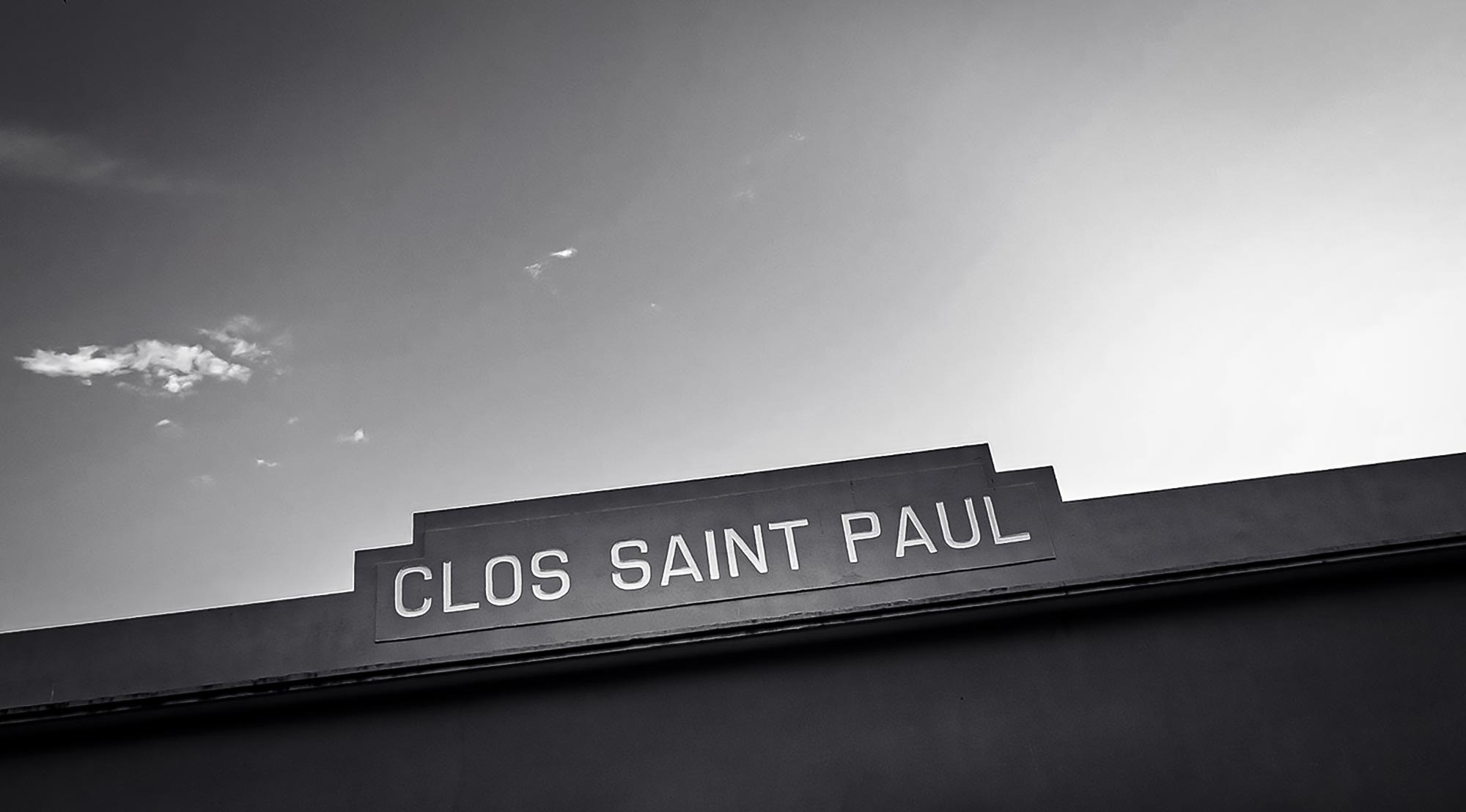the estate
In the south of the Châteauneuf-du-Pape appellation, a small road lined with olive, pine and almond trees leads to Domaine de Saint-Paul.
The Art Deco façade, dating from 1934, reflects the modernity of the vintages and invites you to enjoy the estate's meticulous wines in an intimate setting.The property has belonged to the Jeune and Establet families since 1958 and became Domaine de Saint-Paul in 1998. Since then, Béatrice, Isabelle and Christophe Jeune, along with a committed team, have nurtured the vines and vintages using organic farming methods, with the seasons in mind.
Tasting room, ageing cellar in demi-muids and oak barrels, farm buildings, storage cellar... everything is close at hand for these attentive and discreet winegrowers.
The Art Deco façade, dating from 1934, reflects the modernity of the vintages and invites you to enjoy the estate's meticulous wines in an intimate setting.The property has belonged to the Jeune and Establet families since 1958 and became Domaine de Saint-Paul in 1998. Since then, Béatrice, Isabelle and Christophe Jeune, along with a committed team, have nurtured the vines and vintages using organic farming methods, with the seasons in mind.
Tasting room, ageing cellar in demi-muids and oak barrels, farm buildings, storage cellar... everything is close at hand for these attentive and discreet winegrowers.
Around the cellar, mouth-watering citrus trees. Between the plots, an olive grove that produces a few bottles of organic olive oil each year, much to the delight of lovers of exceptional olive oil.
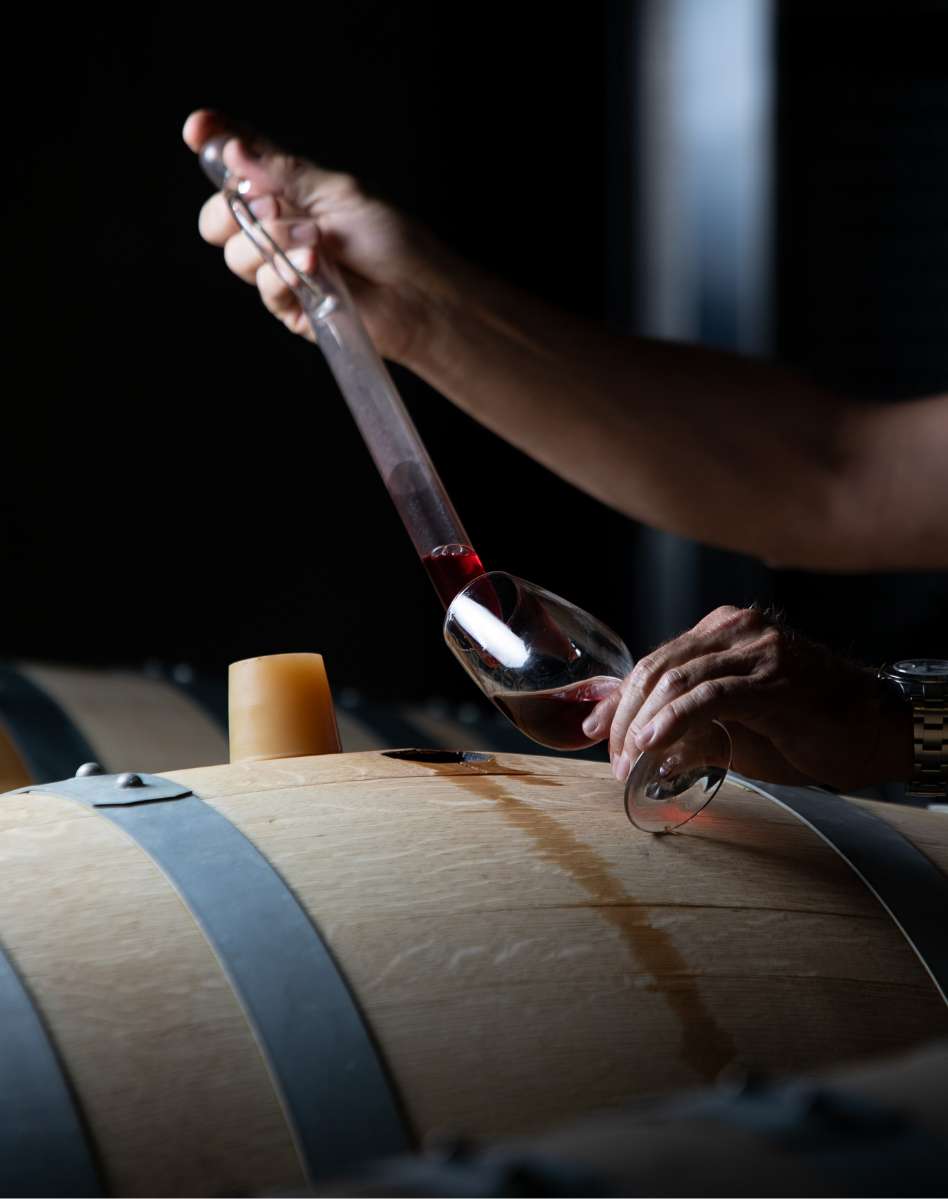
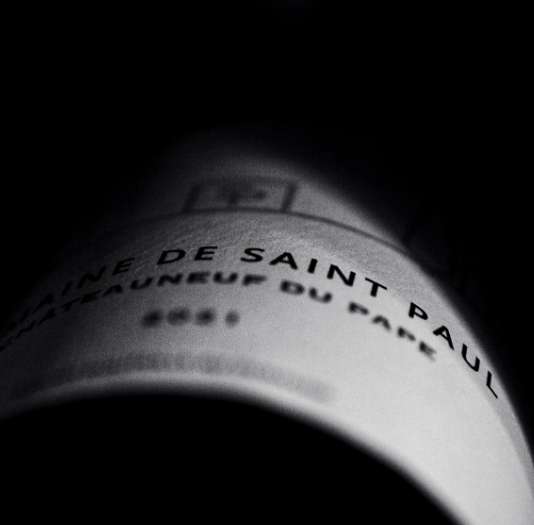
The vineyard
14 hectares of Châteauneuf-du-Pape and 5 hectares of Côtes-du-Rhône make up the Saint-Paul estate, which has been certified organic since 2012.
The vineyards of southern France require daily attention.
Here too, the vines are getting on in years, with some reaching 70 years of age on the Pied-Redon plateau. Clinging to the marked and tortuous wood that pierces the saffron and fine clay, the lively, juicy and perfect fruit announces great promise. Planted on a desert of reddish pebbles, this oasis of green vines is often aired by a determined Mistral wind. Thanks to a debudding stage, each bunch of grapes flourishes healthily in a favourable microclimate, under the expert hands of the winegrowers.
The vineyards of southern France require daily attention.
Here too, the vines are getting on in years, with some reaching 70 years of age on the Pied-Redon plateau. Clinging to the marked and tortuous wood that pierces the saffron and fine clay, the lively, juicy and perfect fruit announces great promise. Planted on a desert of reddish pebbles, this oasis of green vines is often aired by a determined Mistral wind. Thanks to a debudding stage, each bunch of grapes flourishes healthily in a favourable microclimate, under the expert hands of the winegrowers.
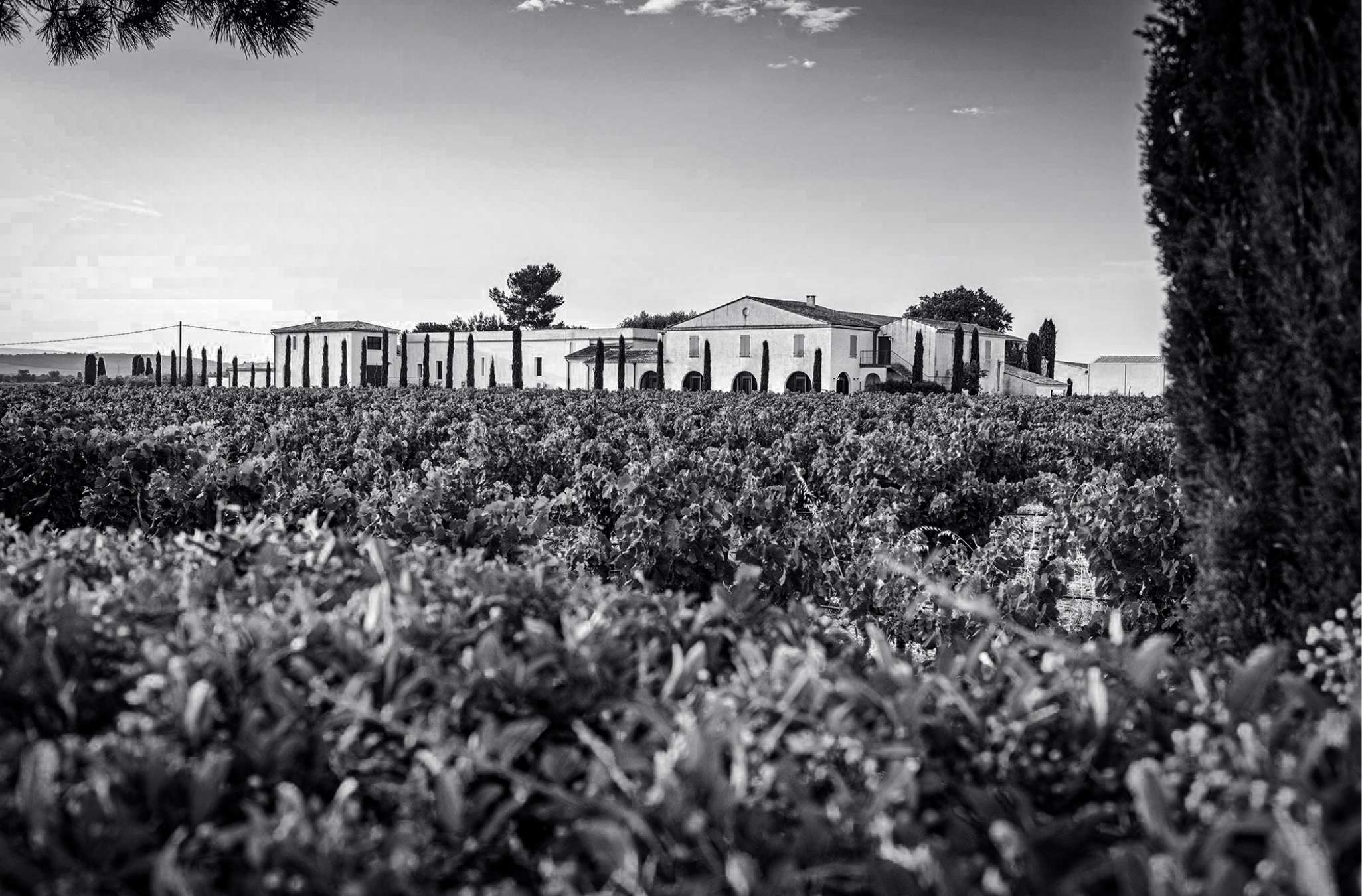
The Jeune family's caring approach is everywhere. In the preservation of biodiversity, the management of water resources, the use of natural fertilisers and the love of the grape, requiring several dozen pickers at the right time for the five red grape varieties (grenache, syrah, cinsault, muscardin and mourvèdre) and the two white varieties (grenache blanc, roussanne).
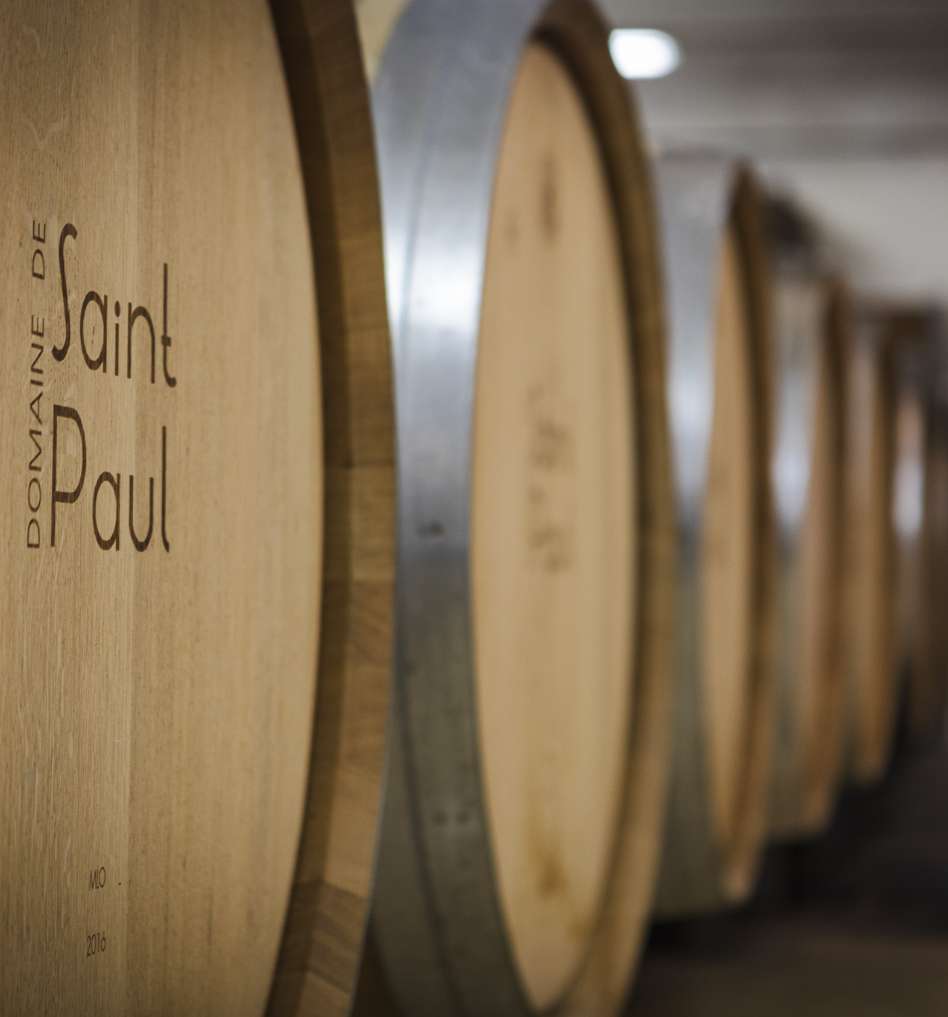
the cellar
With sun, care and a little water, the wine is made.
In the rows and in the cellar, it's a balancing act with a happy outcome.
In the bottle, silky, gourmet wines that explore the more modern face of the Châteauneuf-du-Pape and Côtes-du-Rhône Appellations, linked to the new generation of winemakers and consumers.
In the bottle, silky, gourmet wines that explore the more modern face of the Châteauneuf-du-Pape and Côtes-du-Rhône Appellations, linked to the new generation of winemakers and consumers.
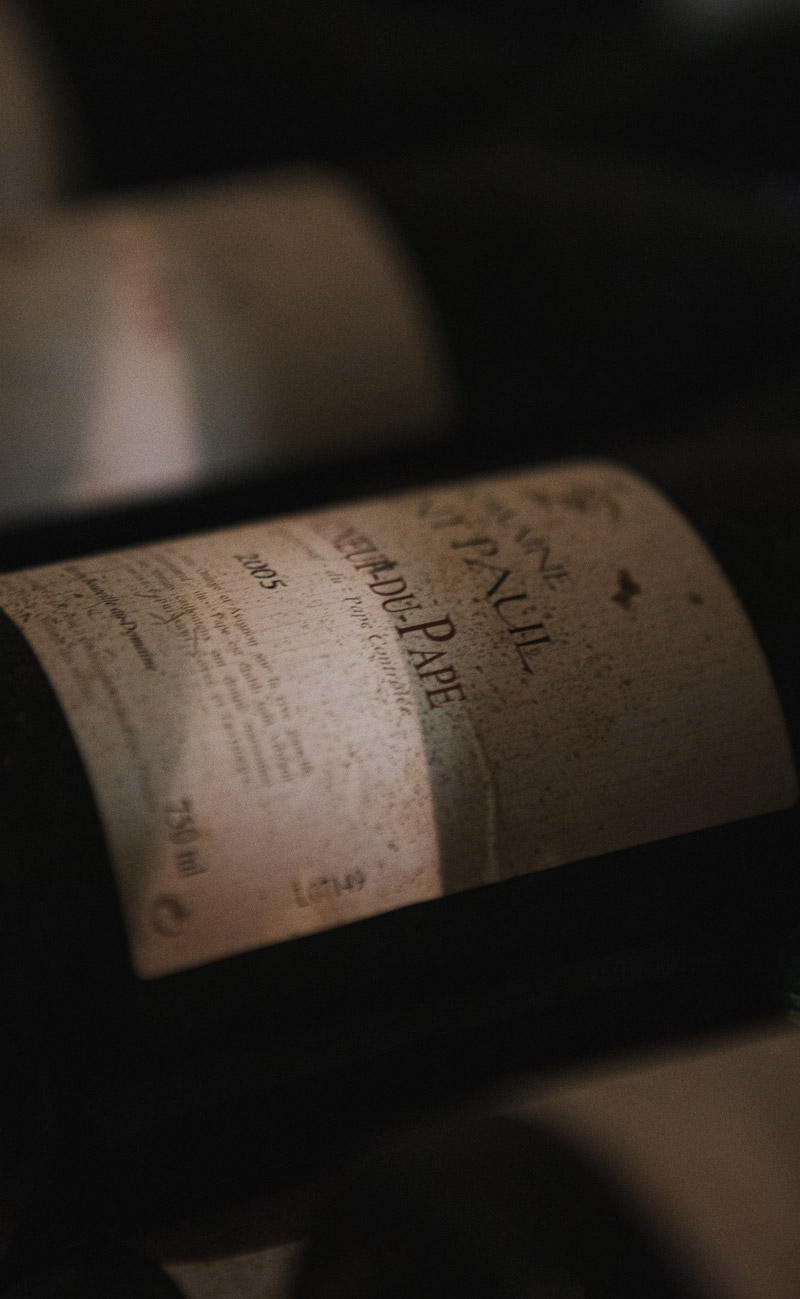
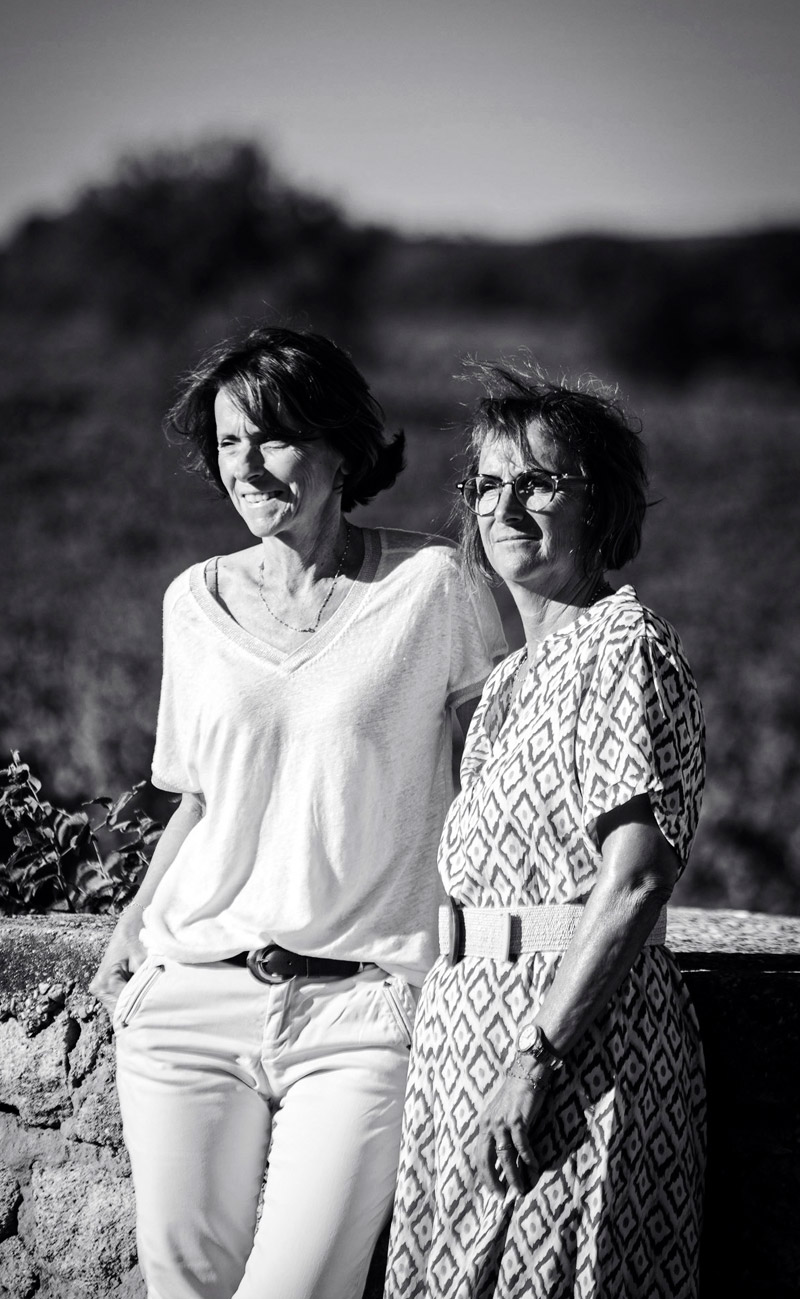
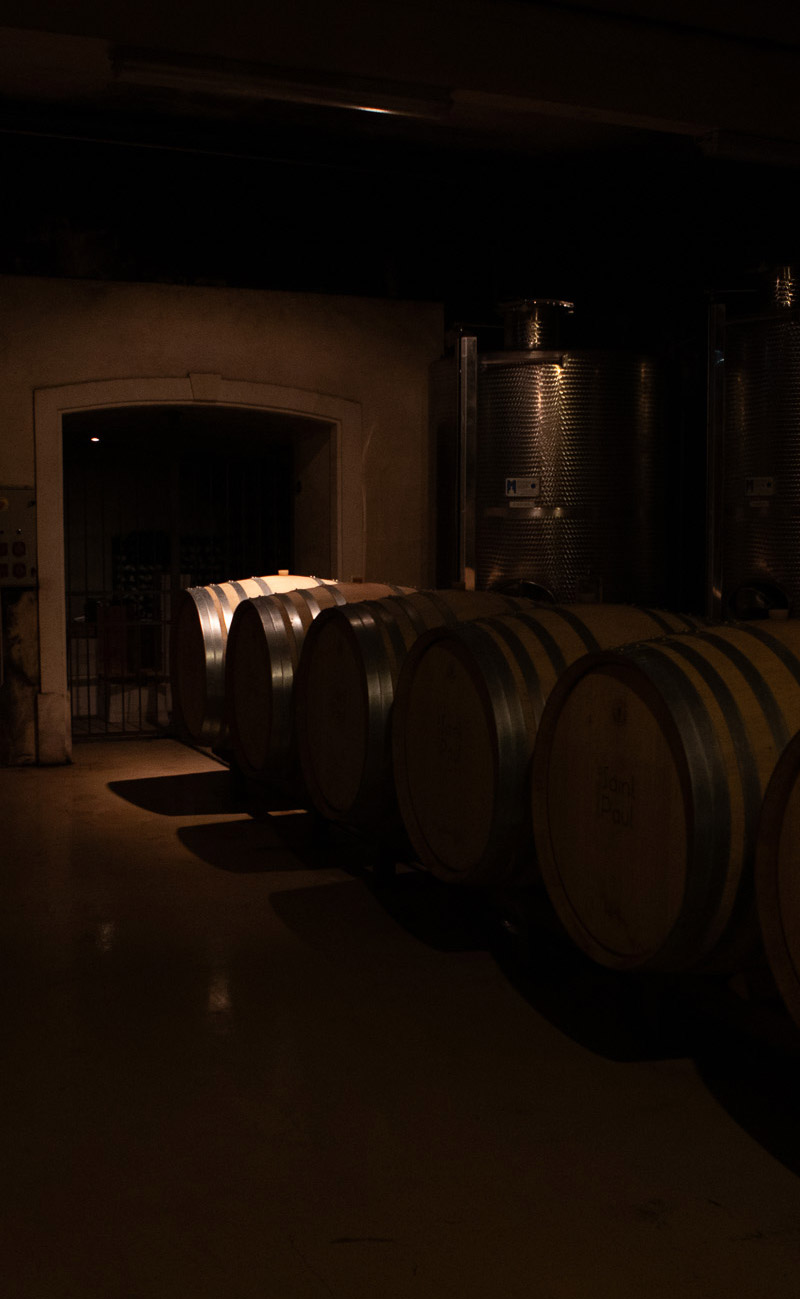
In the coolest hours of the day, it's time to taste the grapes and separate them from their stalks. The manual harvest, carried out very early in the morning, makes it easier to select the bunches in the vines, and the work continues in the temperate atmosphere of the cellar.
The wines from Domaine de Saint-Paul, which are produced using organic methods, are divided between stainless steel vats and white oak truncated cone vats. The Syrahs are aged for 12 months in demi-muids and barrels. The most concentrated and tannic Grenaches are aged in demi-muids.
Depending on the vintage, the wines are matured for 8 to 12 months, and can be enjoyed young and accompanied by unlimited creative cuisine.
The wines from Domaine de Saint-Paul, which are produced using organic methods, are divided between stainless steel vats and white oak truncated cone vats. The Syrahs are aged for 12 months in demi-muids and barrels. The most concentrated and tannic Grenaches are aged in demi-muids.
Depending on the vintage, the wines are matured for 8 to 12 months, and can be enjoyed young and accompanied by unlimited creative cuisine.
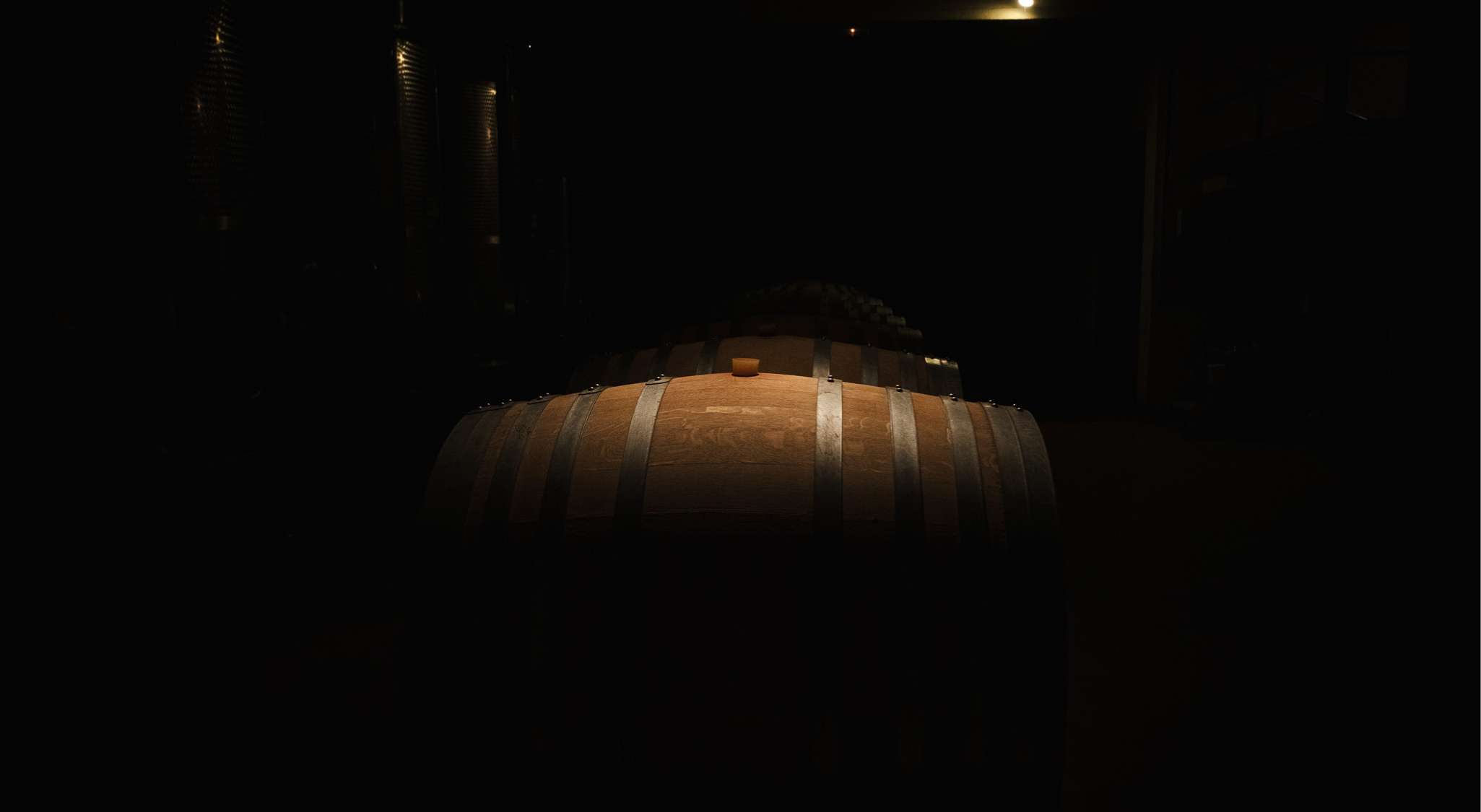
Some of them even remain in the cellar for a very long time, like jewels bearing witness to years of hard work and highflying alchemy.
